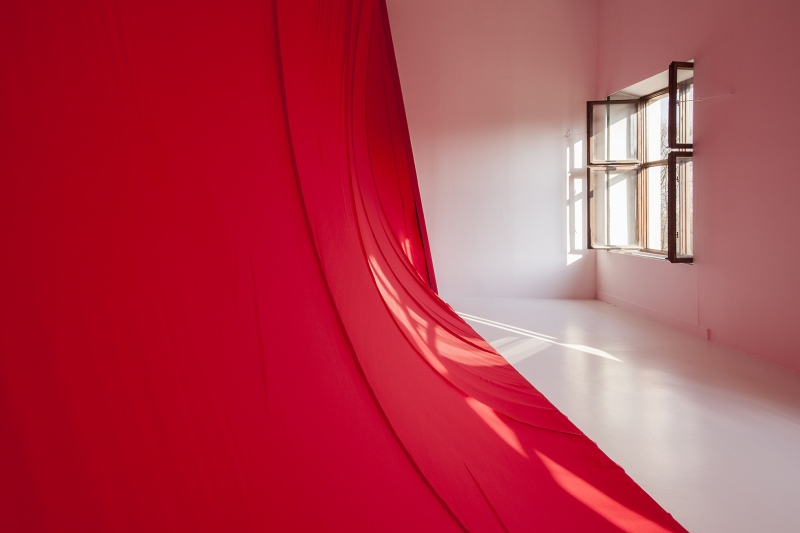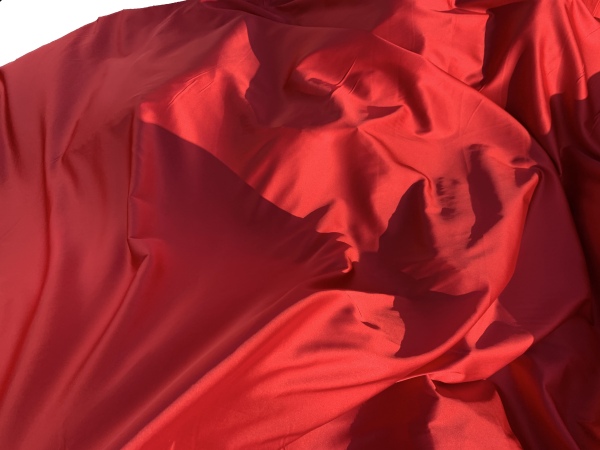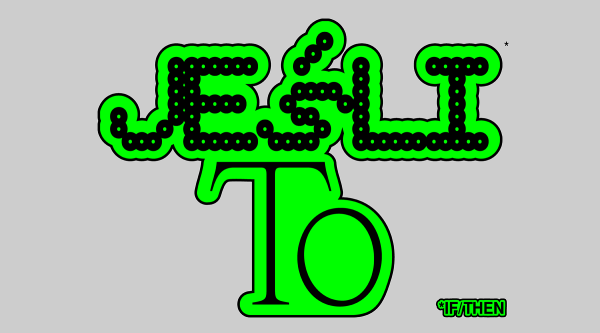talk
„Normalcy becomes the most desired condition”
Kornelia Dzikowska in conversation with Ewa Kozik
-
Ewa Kozik: Let’s go back to the beginning. What made you create an installation where two opposing forces struggle against each other?
- Kornelia Dzikowska: Embarking on a project, I reflect on both the space and the contexts involved. In this case, when I was setting about to work, it was a very intense moment related to the changes taking place at this very institution. The exhibition space became sort of a field where an institutional battle was fought. That was a major inspiration for me to take up the issue, I guess. I was also intrigued by the discovered fact that the room has a different structure than what we see. A white cube arranged in a historical interior is probably meant to be a convenience for artists, a “perfect” exposition space that communicates no extra contexts. And at that point I felt that I wanted to uncover that which was hidden under the plasterboards, to expose what was proper to the space. I thought about what the windows gave me, and it suddenly became clear that they had to be open wide to let the outside world into our exhibition space.
-
The result is a situation where the Project Room space divides into that which is natural: the room’s original architectural tissue, white walls, open windows, and the outside world, and that which is not: the plasterboard covering the doors to other rooms, red walls, floor, and ceiling, and the room’s interior. These two zones are separated by a huge red fabric stretching from ceiling to floor. Upon entering the room, you see only red. Why did you decide to place the visitors on the side of the “unnatural”?
- I think man is the origin of the synthetic. It is in our nature to produce, on many levels. This can be damning, and even lead to a clash of successive values and structures. I won’t venture to say what is good and what is bad, subjective judgements have never found a full application in problem-solving, or they have, but turn out to be unfair to someone. What I wanted was for us as visitors to enter in a staged situation and be able to look at the neutral from the perspective of this installation. And in this case it’s a rather ironic situation, where through a hole in the fabric this other room “spills in” with the wind. Peaking inside of it, the visitor stands in the draught to examine the ordinary.
-
Many people pay attention to the colours you’ve used: red and white. We’re used to think of opposites rather in terms of black and white. You’ve opted for a more original combination, which in our country inevitably raises national connotations. What is the purpose of this gesture?
- I’ll tell you that to use the “medium” of these colours has been quite a deliberate decision on my part. But equally deliberate is the avoidance in the curatorial text of any clear-cut interpretations of the work. My perspective on this installation is that we’re dealing here with a fierce struggle of two spaces. They wrestle with each other in nothing less than a dance of interdependence. And one cannot exist without the other. And, of course, we can refer rather superficially to the obvious combination of white and red here, but we can also examine the broader question of whether such an even division as in the Polish flag is possible at all. And in my opinion this metaphor of destabilization and constant struggle is contained in the “changeability” of this composition. And as in life, there are a great many more or less absurd factors that trigger off the given conditions in which the work finds itself. And I’d actually be tempted to consider it in a perspective broader than the confines of the Project Room. So I view this work starting from the detail, i.e. the cut – a blemish on the beauty of this perfect fabric. A red with a splinter of white.
-
Let’s talk about this slit in the middle of the fabric, through which we can look into the other side. Since it lets in a strong shaft of bright light, we’re tempted to look through it to find out what is there. It’s the allure of mystery too, of course: we want to know that which has been hidden from us. But you stop short of offering the spectator an easy encounter with the unknown. The fabric stretches on to the floor, covering it, and in order to peek through the cut, you need to walk over it. Many people will stop and refrain from doing so out of respect for an artwork. Why did you create this obstacle?
- Frankly, I love confronting the spectator with such dilemmas. That’s why I shift onto them the responsibility for deciding whether they’ll succumb to the temptation and confront the object directly. For we may just walk onto it by the sheer force of momentum, or may stop to admire its softness and how it reflects the light. I leave to the spectators where they take this installation, whether it’s a trampled rag that we find after the show…
- This “hole” in the fabric is also something of a joke, it’s funny. Vaginal connotations, a metaphorical return to the womb, and a draught we step into to look “outside.” I love the absurdity of the situation, and that the public decides to partake in it after all, despite the tough decisions they have to make to get there.
-
In fact, at any one time only one person can be looking through the cavity, everybody else have to wait for their turn to take their place and look out through to the other side. Those waiting are thus confronted with a new spatial composition: the sight of a person whose head has been swallowed by the “red lips” of the installation. At that moment, they become without a doubt a part of the artwork. Is this what you want, for the visitor to become a part of the installation, and changing it, also its co-author? Do you want to cede to the visitor the decision over the work’s ultimate shape?
- What has always seemed most interesting to me is how my (and other artists’) works continue to live their own life. The moment the show launches is when I hand the work over into the public’s hands. And what they come up with is the most compelling thing. Of course, I don’t want them to remake, ruin, or alter it. Rather I’m interested in how they’ll use the tools I’ve left them. And what will remain in them after the experience. Emotions, connotations, perhaps some particularly good jokes about it. That’s what art should be for, I believe.
-
Your intervention in the Project Room space affects not only the visitors, but also the space of the Ujazdowski Castle itself. The wide-open windows produce a draught, with air from the outside spreading around the building, often chilling one room after another. Interestingly, Power Play operates a bit like a virus –spreading, slowly but surely, almost imperceptibly at first, far beyond the bounds of the room assigned for it. Was that your intention? To ventilate the institution?
- The word “virus” is, I guess, particularly contextual here, for it’s worth noting that we’re talking during the Covid pandemic, in a situation where the CCA had to go into lockdown effective from 12 March, just six days into the show. But yes, you’re right, I want this gesture of opening up the windows to help let some of that outside air inside the Castle. Perhaps also to be felt subliminally through a change of temperature in the adjacent rooms. Discomfort, and how we deal with, is interesting. I liked the fact that the staffers minding my show were all provided with down jackets. The institution as people adapting to a situation left by artists. That’s beautiful. And besides all that – windows wide open mean so many potential scenarios! A spring hurricane perhaps? Or stuffy, immobile air? There are so many possibilities.
-
You’re right, I didn’t use the word “virus” without a reason. The coronavirus has put the CCA events schedule on halt, and the institution has been closed to visitors for nearly a month and a half now. The show’s official end-date has passed, but it hasn’t been disassembled. An installation that deliberately divides space and speaks of the existence of worlds of a completely different nature, opens at a time when the pandemic has reached Poland. A pandemic that divides our world too: into what we know and the great unknown that will follow. Does this unplanned intermission provide your work with a new context? Do you see it from a different perspective now?
- I guess it’s inevitable that the work is viewed through the prism of the pandemic. A few people even wrote to me after the lockdown was announced here (among other places), to say that for them the piece acquired particular poignancy. We’re all imprisoned in a red colour that fills the entire space, with only a narrow slit offering a view of the outside world, which, however, is in fact inaccessible for us. At this moment, normalcy becomes the most desired condition.
- Actually, it’s interesting to watch how the world transforms overnight so radically. When we were planning the show, no one expected that everything would change so much, providing new contexts. Another interesting perspective is a reflection on the Castle itself, as something that has gone into hibernation with the lockdown and arrested my work within itself.
- Now that the CCA is preparing to reopen for the public, multiple safety issues related to the pandemic need to be taken into consideration. Art can no longer be so freely “available” for immediate physical contact, there’s been a discussion about whether the virus can be transmitted by people touching the fabric. It’s a strange new world where we need to find our bearings also as artists.
-
Various public safety issues have indeed emerged due to the interactive character of Power Play – the way it makes you stick your head through the hole, touch the fabric, but also to how it simply keeps you inside. The installation encourages visitors to stay there – many would sit down on the floor and watch the movement of the fabric, trying to guess its rhythm, like you watch the sea or fire. Would you have done something differently if you’d known what you know now? Would you have designed the work differently, produced something else altogether, or rather done exactly the same thing? Are artists already modifying their practices because of the pandemic?
- That’s right, shortly after the reopening for the public, various prohibitions and rules were proposed that should prevent the spread of the virus. I’m hardly in a position to judge the risk posed by this installation, I don’t have the expertise for that. I can only be guided by my own perspective as its maker. The CCA has ultimately decided to leave the choice to the spectators, so that they can decide themselves how closely they want to experience the work.
- I wouldn’t change this work by a millimetre. Perhaps it should belong to the pre-pandemic world, when it was made. It’s hard to say which changes will last, and what impact they will have on artistic production. Personally, I don’t consider changes as something to be afraid of, but rather as opportunities.
-
I’d like to return to the subject of how institutions react to and are transformed by situations created by artists. Power Play is a capricious piece: if there’s no sufficient draught, it puffs out like a punctured balloon, or billows like a window curtain. It’s unable to inflate its huge belly, or sucks itself in towards the windows, annexing the white zone. Every morning, the guards minding the show open the windows and check out whether the installation still “breathes normally,” or whether it’s necessary to consider again how to naturally breathe life into it. So it’s more like caring for the exhibition rather than minding it. It’s as if you’ve brought into the Project Room a creature that thrives on the flow of air, and the institution has to make sure that it gets enough of it. Was that your intention –to insert the politics of care between the museum staff and the art object?
- I’m happy you’ve noticed the mechanisms involved in this work. Subconsciously, I produce installations that are difficult to exhibit and accompanied by various situations that occur while they’re on show. And there’s obviously the perspective of the public – of the visitor who comes from outside and spends some time with the work. But there’s also that part of the story which is produced within the Castle, that’s all the servicing of the work. From the technical crew, who’ve pledged to open and close the upper windows, through the maintenance team, to the guards, who doubtless spend more time with the work than anyone else. It’s them that the responsibility for its wellbeing rests on. Whether they breathe life into it or not. I realize that, like in any relationship, there can be difficult moments, bad days. The constant draught becoming irritating. But still I feel a sense of shared responsibility. It’s like the classroom hamster you need to take care of. The question is who takes it for holidays.
-
“Shared responsibility” could also be a title of your installation. It can be perceived as a commentary on the tensions occurring at present in the structure of the Centre for Contemporary Art itself (with the appointment of a new Director); the nationwide political divides (say, the recent presidential elections), interpreted in the context of Poland being split half-half; or even, as you’ve mentioned, the inside and outside, separated from each other by the pandemic. Opposing forces have gained high visibility in recent times, and I feel like we live in a sense of constant tension, analysing what else can yet happen. At the same time, we know that the end of one world or order is the beginning of another, and this is what the vaginal cleavage at the very centre of Power Play can symbolize. But nothing’s been born yet. Neither side have “won”. The liminal moment continues, and we can observe it, or even, to a limited degree, influence it.
- This year is incredibly rich in testing experiences. Testing for us all. I try remain confident that the trend will eventually reverse. But perhaps it’s us who can reverse it ourselves by starting with ourselves and our own habits. To return to reflection on the world in which my work has now found itself, yes, I’d say that my favourite part of it, the slit, acquires an even more telling significance with respect to the birth of a new order. Although, frankly, I’d rather stay away from such literal analogies with reality. Let’s leave the installation a certain “independence” and abstractness in which everyone can find strands that matter to them.
Today at U–jazdowski



